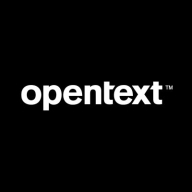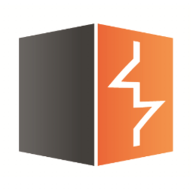

PortSwigger Burp Suite Professional and OpenText Core Application Security compete in the security testing tools category. Burp Suite has the edge due to its competitive pricing and extensive flexibility, while OpenText offers a comprehensive feature set more suited to large-scale enterprises, despite its higher cost.
Features: Burp Suite provides flexibility with features like Intruder, Repeater, and Proxy, supported by extensive plugins and extensions for tailored assessments. OpenText Core Application Security focuses on detailed vulnerability scanning and integration options, delivering insightful security capabilities for enterprise applications.
Room for Improvement: Burp Suite could improve its documentation and CI/CD integration, as well as enhance reporting and reduce false positives. OpenText users desire better pricing models, expanded integration capabilities, and a more user-friendly experience for non-technical users.
Ease of Deployment and Customer Service: Burp Suite's on-premises deployment fits many users but limits cloud adoption, where it excels in customer service with responsive support and rich resources. OpenText offers greater cloud flexibility and hybrid deployment but needs more accessible support options and improved documentation.
Pricing and ROI: Burp Suite is noted for its competitive entry price and strong ROI, valued for wide adoption in the industry. OpenText, although more expensive, provides substantial value with its robust features and scalable pricing model, justifying the higher cost for comprehensive security needs.
| Product | Market Share (%) |
|---|---|
| PortSwigger Burp Suite Professional | 2.2% |
| OpenText Core Application Security | 3.9% |
| Other | 93.9% |


| Company Size | Count |
|---|---|
| Small Business | 16 |
| Midsize Enterprise | 8 |
| Large Enterprise | 43 |
| Company Size | Count |
|---|---|
| Small Business | 16 |
| Midsize Enterprise | 14 |
| Large Enterprise | 35 |
OpenText Core Application Security offers robust features like static and dynamic scanning, real-time vulnerability tracking, and seamless integration with development platforms, designed to enhance code security and reduce operational costs.
OpenText Core Application Security is a cloud-based, on-demand service providing accurate and deep scanning capabilities with detailed reporting. Its integrations with development platforms ensure an enhanced security layer in the development lifecycle, benefiting users by lowering operational costs and facilitating efficient remediation. The platform addresses needs for intuitive interfaces, API support, and comprehensive vulnerability assessments, helping improve code security and accelerate time-to-market. Despite its strengths, challenges exist around false positives, report clarity, and language support, alongside confusing pricing and package options. Enhancements are sought in areas like CI/CD pipeline configuration, report visualization, scan times, and integration with third-party tools such as GitLab, container scanning, and software composition analysis.
What features define OpenText Core Application Security?Industries like mobile applications, e-commerce, and banking leverage OpenText Core Application Security for its ability to identify vulnerabilities such as SQL injections. Integrating seamlessly with DevSecOps and security auditing processes, this tool supports developers in writing safer code, ensuring secure application deployment and enhancing software assurance.
Burp Suite Professional, by PortSwigger, is the world’s leading toolkit for web security testing. Over 52,000 users worldwide, across all industries and organization sizes, trust Burp Suite Professional to find more vulnerabilities, faster. With expertly-engineered manual and automated tooling, you're able to test smarter - not harder.
PortSwigger is the web security company that is enabling the world to secure the web. Over 50,000 security engineers rely on our software and expertise to secure their world.
We monitor all Application Security Tools reviews to prevent fraudulent reviews and keep review quality high. We do not post reviews by company employees or direct competitors. We validate each review for authenticity via cross-reference with LinkedIn, and personal follow-up with the reviewer when necessary.